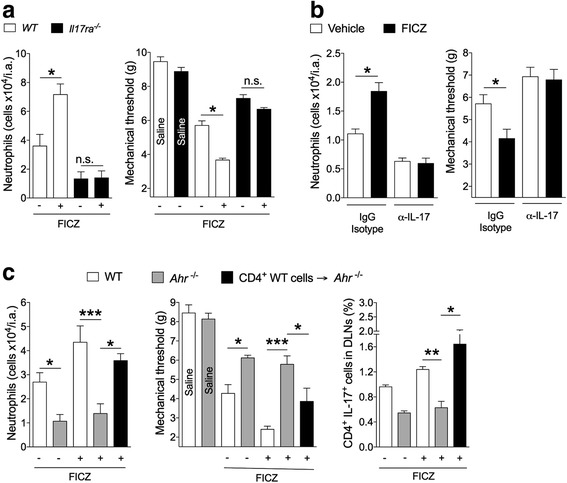Fig. 4.

AHR activation in T cells induces arthritis aggravation in an IL-17RA-dependent manner. a AIA was induced in WT or Il17ra−/− mice and treated with vehicle or FICZ (90 μg/kg) during immunization. Neutrophil in the joints and hyperalgesia were determined 7 h after challenge. Mean ± SEM, n = 5/group, *P < 0.05; n.s, not significant, one-way ANOVA followed by Bonferroni post hoc test. b AIA was induced in WT mice treated with anti-IL-17 (α-IL-17) or the isotype control antibody at the same time as the mice were treated with vehicle or FICZ. Neutrophil in the joints and hyperalgesia were determined 7 h after challenge. Mean ± SEM, n = 5/group, *P < 0.05; n.s, not significant, one-way ANOVA followed by Bonferroni post hoc test. c AIA was induced in WT or Ahr−/− mice. The mice were treated or not with FICZ. One group of Ahr−/− mice (CD4+WT cells → Ahr−/−) received CD4+ T cells from WT mice 1 day before the first immunization. Data are mean ± SEM, n = 5/group, *P < 0.05, **P < 0.01, ***P < 0.001, one-way ANOVA followed by Bonferroni post hoc test. All data are representative of two independent experiments. DLN draining lymph nodes, FICZ 6-formylindolo[3,2-b]carbazole, IL-17 interleukin 17
